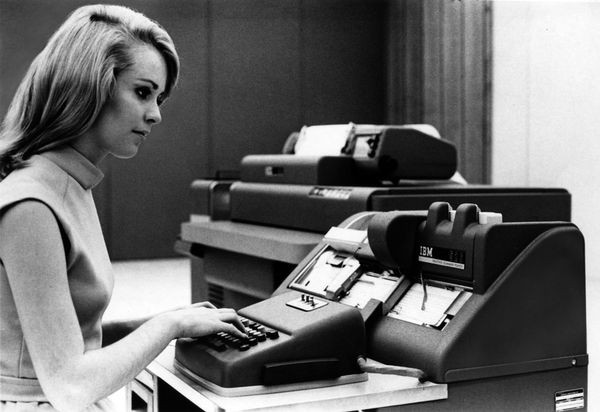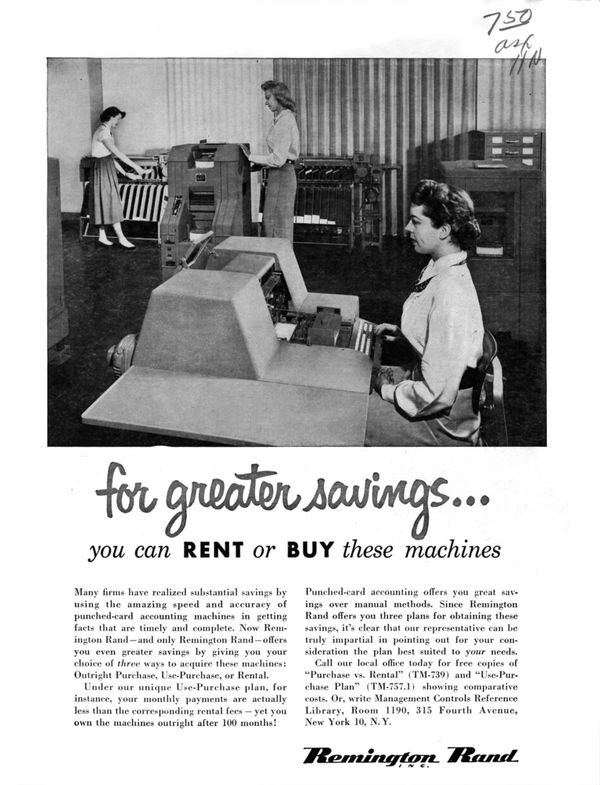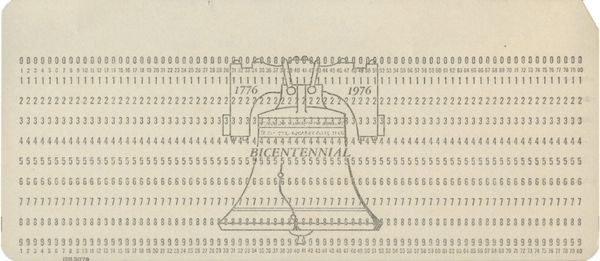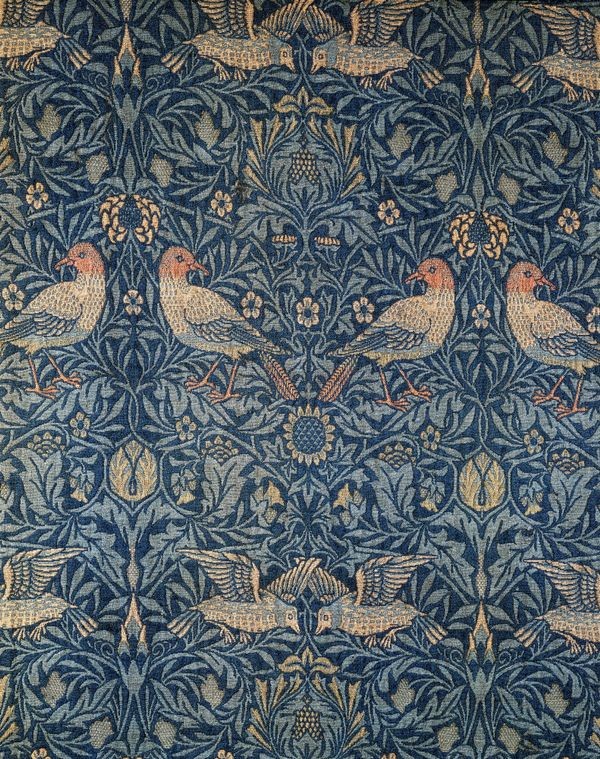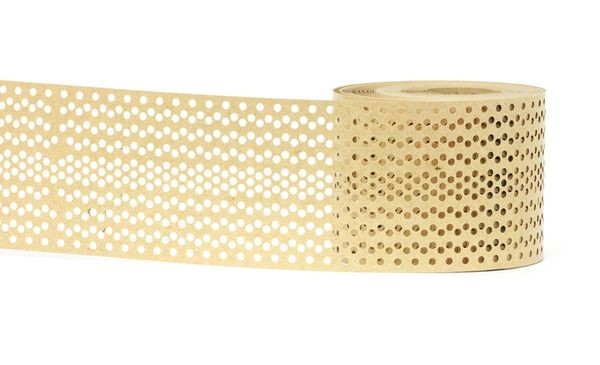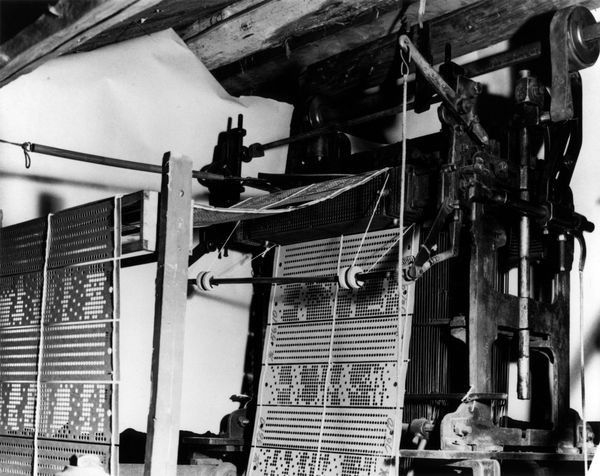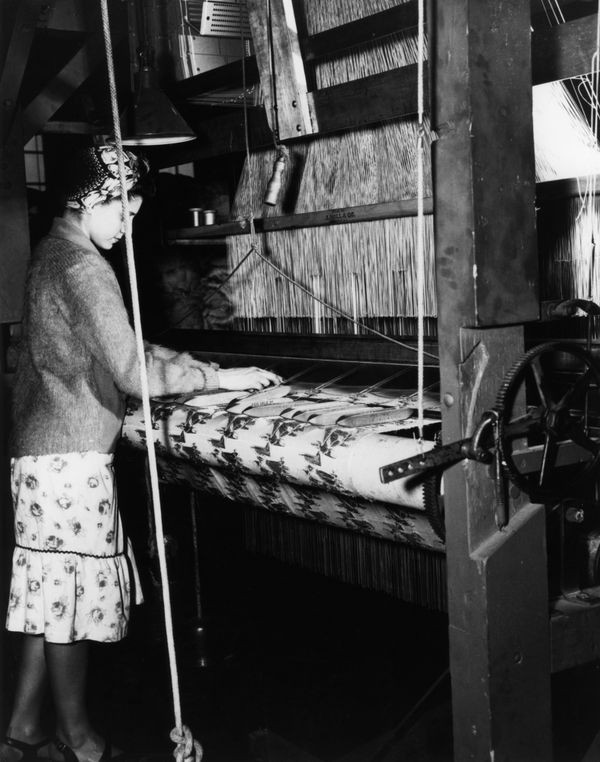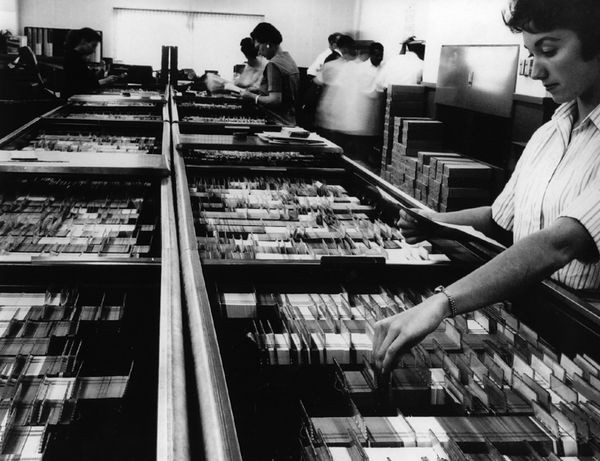The Punched Card’s Pedigree
Data entry
Punching data into cards was considered clerical or secretarial job—which in those days was considered “women’s work.” So, most keypunch operators were women.
The Punched Card's Pedigree
Hollerith’s 1890 census device proved the feasibility of punched cards for big projects. And his Tabulating Machine Company helped make cards the primary data storage system for 80 years. But Hollerith didn’t invent the idea.
In the early 1800s, mechanized looms stored textile patterns using punched cards. Charles Babbage’s un-built Analytical Engine featured a card reader. Even player pianos stored melodies using holes in paper.
Remington Rand Unit Record Equipment advertisement
IBM nearly always leased rather than sold punched-card equipment for a monthly fee that included maintenance. Other companies thought that giving customers the opportunity to buy might offer a competitive advantage.
View Artifact DetailBicentennial punched card
Punched cards generally use one column of holes for each digit or letter. But there was no worldwide standard for the number of columns, the size of the card, or the shape of the hole. In 1928 IBM switched to rectangular holes on 80-column cards. Powers-Samas in the UK continued to use round holes, and over the years had cards with 21, 26, 40, 65, and 80 columns. In the 1970s IBM introduced a 96-column card with very tiny round holes.
View Artifact DetailAutomating an Art: The Jacquard Loom
Weaving, one of the oldest crafts, was among the first to become automated. A key innovation, and a milestone of the Industrial Revolution, was Joseph Marie Jacquard’s 1801 loom, which wove textiles following patterns coded on large punched cards.
The Jacquard loom was among the first uses of stored data in commercial production.
Jacquard fabric sample
A complex pattern woven by the loom needed tens of thousands of individually punched cards. But once made and debugged – like a software program -- the cards could be used many times to create identical fabric.
View Artifact DetailJacquard loom cards
As one of the earliest examples of automatic control, Jacquard’s looms were controlled by a set of punched cards bound together into a ‘program.’ The pattern of holes made in these cards determined the weaving pattern made by the loom and highly-elaborate designs were possible.
View Artifact DetailClose-up of Jacquard loom cards
Each row on a card corresponds to one row of the textile design, and each hole controls whether a horizontal thread goes above or below the vertical threads. The Jacquard cards are strung together with narrow ribbons, so they are more like computer paper tape than separate punched cards.
View Artifact DetailWoman working with Jacquard loom
The loom—human-powered but card-controlled—allowed even unskilled workers to create complex patterns. Similar looms are still used today, mostly in developeding countries, although modern looms are controlled by computers.
View Artifact DetailPunched card tub file
Office clerks pull punched cards from a motorized “tub file.” Eliminating the cumbersome tub file was a goal of RAMAC, the world’s first disk drive.
View Artifact Detail